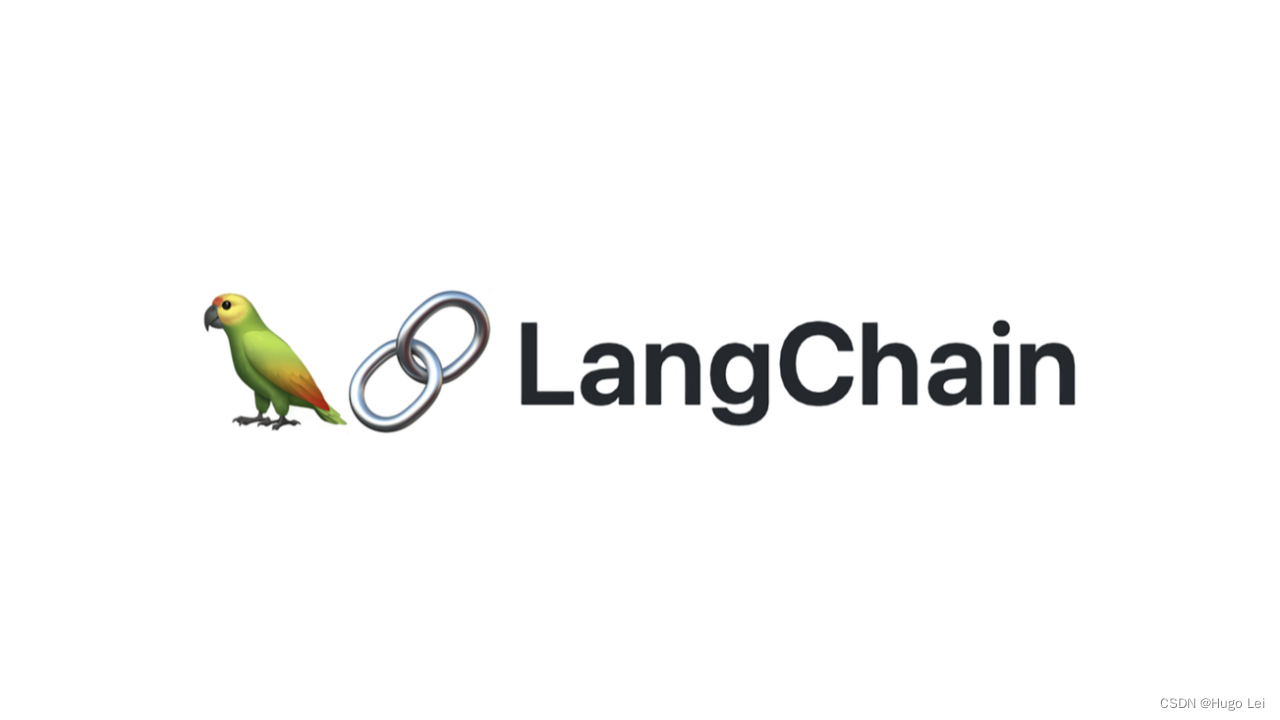
背景
基于本地的ChatGLM3-6B直接开发LangChain Function Call应用,发现其输出的action和action_input非常不稳定。
表现为生成的JSON格式回答非常容易出现不规范的情况,导致LangChain的Agent执行报错,或者进入死循环。
ChatGLM3-6B不兼容Langchain 的Function Call
Langchain 作为最主流的大模型中间件开源框架,备受广大开发者的认可。
Langchain中具有一套完整的 Agent 思维,包括灵活,简单的Function Call开发框架。
ChatGLM3-6B 模型在同量级模型中有出色的Function Call能力。
但遗憾的是,其训练过程并没有与Langchain进行原生对齐。
这导致如果直接使用Langchian框架,将会遇到以下问题:
-
无法载入ChatGLM3-6B模型,Langchain中的 LLM模型 目前仅支持在线的几个主流模型,例如ChatGPT,Bard,Claude等
-
无法正常使用 Agent 的 Function Call 功能,ChatGLM3-6B的截断点与 Langchain 支持的并不同。
-
提示词不同,使用 Langchain 封装的 Agent 提示词完全无法胜任ChatGLM3-6B 的 Function Call 任务。

将GLM模型接入Langchain
首先,要解决第一个痛点:ChatGLM3-6B 模型能够被 Langchain 读入并执行。
那么,我们就需要基于Langchain的LLM类完成ChatGLM3-6B的模型实现。
封装自定义LLM
class ChatGLM3(LLM):max_token: int = 8192do_sample: bool = Falsetemperature: float = 0.8top_p = 0.8tokenizer: object = Nonemodel: object = Nonehistory: List = []tool_names: List = []has_search: bool = Falsedef __init__(self):super().__init__()@propertydef _llm_type(self) -> str:return "ChatGLM3"接着,我们要写入读入模型的方法,这与 Langchain 支持的在线模型不同,这里使用 Huggingface 的方式进行读入。
def load_model(self, model_name_or_path=None):model_config = AutoConfig.from_pretrained(model_name_or_path,trust_remote_code=True)self.tokenizer = AutoTokenizer.from_pretrained(model_name_or_path,trust_remote_code=True)self.model = AutoModel.from_pretrained(model_name_or_path, config=model_config, trust_remote_code=True).half().cuda()按LangChain的格式构建Tool
其中包括工具的name,description,params等信息,可以被LangChain自动识别出来,加入到prompt中
import abcfrom typing import Type
from langchain.tools import BaseTool
from pydantic import BaseModel, Fieldclass CalculatorInput(BaseModel):calculation: str = Field(description="calculation to perform")class Calculator(BaseTool, abc.ABC):name = "Calculator"description = "Useful for when you need to calculate math problems"args_schema: Type[BaseModel] = CalculatorInputdef __init__(self):super().__init__()def _run(self, calculation: str) -> str:calculation = calculation.replace("^", "**")if "sqrt" in calculation:calculation = calculation.replace("sqrt", "math.sqrt")elif "log" in calculation:calculation = calculation.replace("log", "math.log")return eval(calculation)
从prompt中抽取tool信息并转换为ChatGLM能识别的结构
然后,就是非常重要的一环。由于我们的工具调用和观察抓取与 Langchain 并不相同,我们需要对 Langchain 的提示词进行修改,并配上我们的提示词。
-
我们先从
AgentType.STRUCTURED_CHAT_ZERO_SHOT_REACT_DESCRIPTION模板中截取到You have access to the following tools:\n\n")的关键词,并在合理插入已经注册的工具类型。
tool_prompts = prompt.split("You have access to the following tools:\n\n")[1].split("\n\nUse a json blob")[0].split("\n")tool_names = [tool.split(":")[0] for tool in tool_prompts]self.tool_names = tool_name增加Observation结构
由于ChatGLM3-6B拥有Observation角色,这与Langchain中原本设定的Observation截断并不相同,因此,在这里,我们需要做提取,在这段代码中,我们需要对原本Langchain中的Observation进行截断,并补
充上我们的工具观察的结果。
def _extract_observation(self, prompt: str):return_json = prompt.split("Observation: ")[-1].split("\nThought:")[0]self.history.append({"role": "observation","content": return_json})return将ChatGLM生成的结果转换为LangChain能识别的结构
在这,我们还需要对执行工具进行截断和填充,使得其能满足ChatGLM3-6B的思维模式
def _extract_tool(self):if len(self.history[-1]["metadata"]) > 0:metadata = self.history[-1]["metadata"]content = self.history[-1]["content"]if "tool_call" in content:for tool in self.tool_names:if tool in metadata:input_para = content.split("='")[-1].split("'")[0]action_json = {"action": tool,"action_input": input_para}self.has_search = Truereturn f"""
Action:
```
{json.dumps(action_json, ensure_ascii=False)}
```"""final_answer_json = {"action": "Final Answer","action_input": self.history[-1]["content"]}self.has_search = Falsereturn f"""
Action:
```
{json.dumps(final_answer_json, ensure_ascii=False)}
```"""由于ChatgGLM3-6B的思维方式并没有Action: 字段,而这是langchain的截断点,因此,我们需要对其进行补充,使得Langchain能知道,此时模型进入调用工具阶段。
最后,我们要基于Langchain的构造,重写_call函数,包括历史记录,提示词等拼接内容。
def _call(self, prompt: str, history: List = [], stop: Optional[List[str]] = ["<|user|>"]):if not self.has_search:self.history, query = self._tool_history(prompt)else:self._extract_observation(prompt)query = ""_, self.history = self.model.chat(self.tokenizer,query,history=self.history,do_sample=self.do_sample,max_length=self.max_token,temperature=self.temperature,)response = self._extract_tool()history.append((prompt, response))return response使用接入了Langchain的ChatGLM3-6B模型
在完成了上述工作之后,我们就已经拥有了支持Langchain的ChatGLM3-6B模型,我们在main.py中对其进行了简单调用
if __name__ == "__main__":llm = ChatGLM3()llm.load_model(MODEL_PATH)prompt = hub.pull("hwchase17/structured-chat-agent")# for single parameter without historytools = [Calculator()]agent = create_structured_chat_agent(llm=llm, tools=tools, prompt=prompt)agent_executor = AgentExecutor(agent=agent, tools=tools)ans = agent_executor.invoke({"input": "34 * 34"})print(ans)注意事项
到此为止,你已经简单实现了使用LangChain调用ChatGLM3-6B模型来实现工具调用和其他基本用法。但是,在更多探索之前,请一定要看这部分的内容。这将能为你之后的开发减少不必要的麻烦。
使用LLMChain的工具
在官方的实现方案中,暂时不能解决在工具中仍然需要调用正常的LLMChain的操作,这意味着你在工具的设计中不能再次调用大模型进行更多操作,例如参数解析等,典型的错误例子为
LLMMathChain
如果使用官方Demo调用这个工具,则必然遇到以下错误:
line 120, in _process_llm_result
raise ValueError(f"unknown format from LLM: {llm_output}")
ValueError: unknown format from LLM: Action:
{"action": "Calculator", "action_input": "23*23"}
这是因为在模型构建的过程中,模型会解析到tools,而在tools中的常规调用模型并没有修改模型的系统提示词,模型还会尝试调用工具,这在常规的Chain中是错误的。
无效的参数和固定的参数
-
ChatGLM3-6B必须使用结构化的Agent,在Langchain中,我们只适配了
AgentType.STRUCTURED_CHAT_ZERO_SHOT_REACT_DESCRIPTION -
如果使用
LLMSingleActionAgent来构建,stop参数无效。 -
使用
Tool.from_function时,args_schema无效。 -
每次创建一个新的Tools,都必须有同名的yaml,或者自己实现传入格式化的工具说明。
兼容OpenAI API
官方的OpenAI API格式的demo,目前无法适配Langchain的工具。
参考
- GitHub - THUDM/ChatGLM-6B: ChatGLM-6B: An Open Bilingual Dialogue Language Model | 开源双语对话语言模型
- LLM大语言模型(十一):基于自定义的ChatGLM3-6B构建LangChain的chain-CSDN博客
- LLM大语言模型(十):LangChain自定义Agent使用自定义的LLM-CSDN博客
- LLM大语言模型(九):LangChain封装自定义的LLM-CSDN博客
- LLM大语言模型(八):ChatGLM3-6B使用的tokenizer模型BAAI/bge-large-zh-v1.5-CSDN博客
- LLM大语言模型(七):部署ChatGLM3-6B并提供HTTP server能力
- LLM大语言模型(四):在ChatGLM3-6B中使用langchain_chatglm3-6b langchain-CSDN博客
- LLM大语言模型(一):ChatGLM3-6B本地部署-CSDN博客

)

——力扣)

)



)






JVM实战——jvm的组成部分详解)
)
:PostgreSQL 与 ClickHouse - 第一部分)
